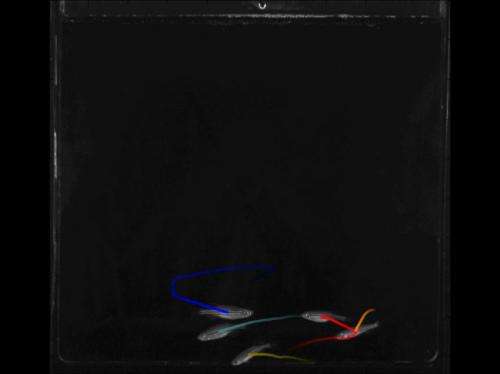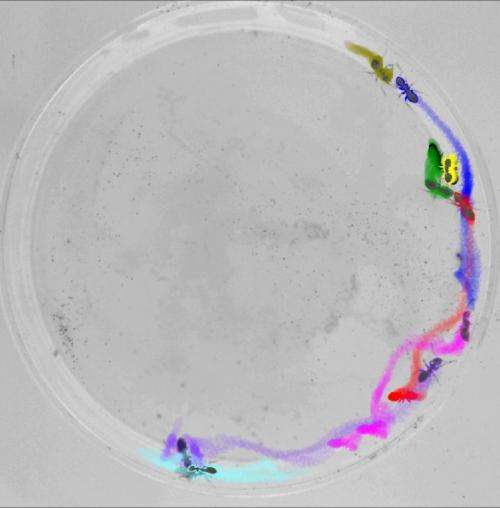Team develops a software able to identify and track an specific individual within a group

Researchers from the Spanish National Research Council (CSIC) have developed a software based on the discovery of some algorithms that enable the identification of each individual, therefore allowing their tracking within the group. Thus, the door opens to the quantitative study of the rules of social interaction for many species. The work has been published in the Nature Methods journal.
Animals that move in groups make decisions considering what other members of their community do. To find out the rules of these interactions, researchers record monitoring videos through which they study the behavior of different individuals. However, existing monitoring methods so far show identification errors throughout the video, which makes that assignment of identity is wrong.
Researchers from the Cajal Institute (CSIC) have developed a software called idTracker, a CSIC patent that enables tracking of animals through identification. The image of the individual, with its unique features, becomes the particular "footprint" of each animal, which allows tracking it although the human visual system can not. Even if they hide or temporarily disappear from the scene, these are recognized by the program when they enter the scene again.
Gonzalo G. de Polavieja, CSIC researcher and head of the study, states: "From now on, we will be able to quantitatively determine the rules of animal behavior in groups taking into account the individuality of each animal".
Frame by frame tracking
The software identification system first performs a search of the specimens when they are separated and can be differentiated. Since then, the program identifies and recognizes its image in every frame of the video. The identification is automatically done by extracting the 'footprint' of each animal. Thus, the routes that each of them took can be determined. De Polavieja adds: "Furthermore, it is possible to study the same individual in several videos because its 'footprint' is always the same. This enables a better understanding of their behavior".

Researchers claim that idTracker is a very easy to use software that can be used with a variety of different species. They state: "We have done tests with fish (Danio rerio and Oryzias latipes), flies (Drosophila melanogaster), ants (Messor structor) and mice (Mus musculus), but it can be applied to other animals".
And among the applications of this software, Alfonso Pérez Escudero, CSIC researcher also during the preparation of this study, notes that "in the short term, this will be used in science, but in the longer term, the method we have developed can be applied to recognize people in large crowds, vehicles or parts in a factory, for instance".
More information: Alfonso Pérez-Escudero, Julián Vicente-Page, Robert C. Hinz, Sara Arganda y Gonzalo G. de Polavieja. idTracker: Tracking individuals in a group by automatic identification of unmarked animals. Nature Methods. DOI: 10.1038/nmeth.2994
Journal information: Nature Methods
Provided by Spanish National Research Council (CSIC)



















